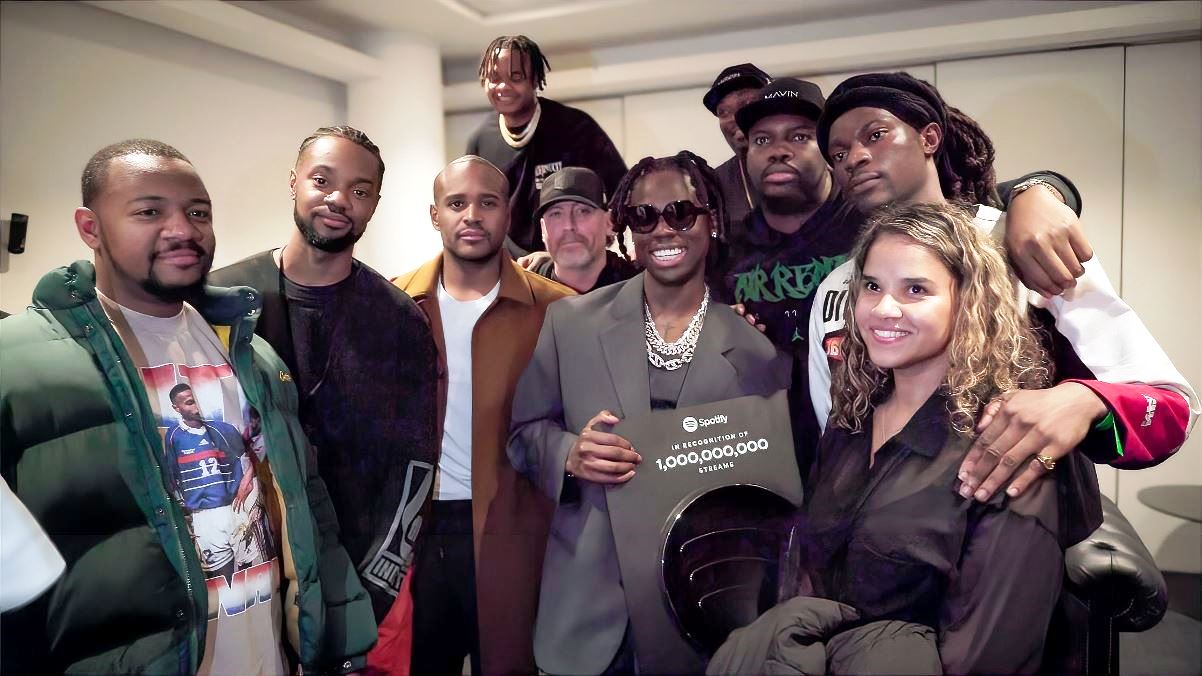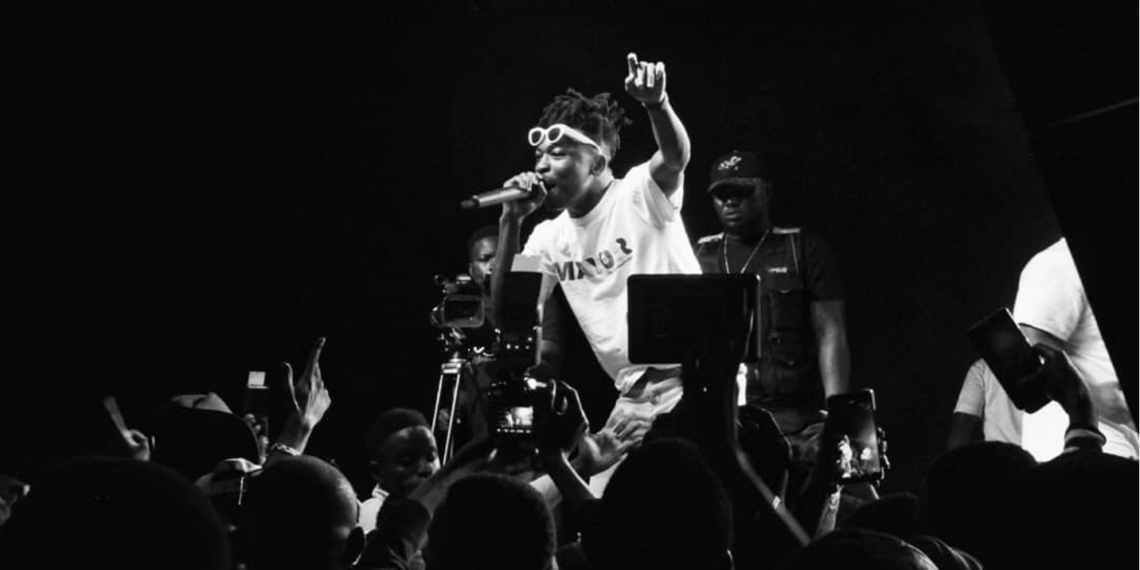The Nigerian music industry has witnessed a remarkable surge in recent years, emerging as the second-largest music industry in Africa in 2021 and now proudly holding the title of the largest music industry on the continent.
This success is a testament to the resilience and creativity of Nigerian musicians.
We boast of musicians like Burna Boy, Wizkid, Davido, Olamide, Rema, Ayra Star, Asake, and hundreds of top artists.

However, these artists’ success is not solely based on their talent but on their ability to research, develop ideas, release songs, and then capitalize on feedback from us, the listeners.
This process is similar to the method employed by designers: DESIGN THINKING.
We will look at case studies of several musicians to see how they came into the limelight, evolved, created a niche for themselves, etc, and how that has worked out so far.
Artists Who Came Into The Limelight and Capitalized on Repetition
We have many talented artists here in Nigeria, some of whom capitalized on the fact that a particular beat gained more traction than expected. Some others rode on the fact that genres, styles, and perhaps lines in lyrics brought them a lot of listeners.
We can argue that musicians should just do what they love and not be confined to a particular style or beat because some people like it.
Others can argue that you should not go into music because of money but because of passion. However, whatever the reason, the most important thing is to remain relevant. Taking advantage of listeners’ feedback is a crucial step in doing just that.
Let’s take a closer look at Kizz Daniel, for example. He entered the Nigerian music industry with his first hit song, “Woju,” in 2014. At that time, it was harder to make hit songs than it is now.
So, we can’t blame him and his team for trying to hold onto the cause of the instant popularity and recognition: his beat. But what’s truly impressive is how he and his team adapted. In less than a year of when “Woju” was released, he released another single, “Laye.”
Social media was becoming a thing then, so many people could air out what they had to say. As people were praising him, there were also people calling him out that he was simply messing with the same beat over and over again.
People said this owing to three hits, “Woju,” “Woju remix,” and “Laye” having the same beat.
Let’s take into cognisance that before Kizz Daniel recorded WOJU, his dad wanted him to do his masters, and he told his dad that he should give him one year to try music. If it did not work out, he would go and do his masters.
And if it did, he would take care of the family with the money he made. With this condition added to his peculiar voice, I think he would have checked out what would probably appeal to listeners.
He would’ve gone through all the stages of design thinking: Empathize, Define, Ideate, Prototype, Test.
After such a positive response to Woju, his team would have indirectly listened to the diverse reactions to his music, both positive and negative, to understand the audience’s perspectives. In this case, he released “Laye” to feed off the positive responses. This can be called the empathize stage.
Next, the define stage. After receiving some criticism about “Laye,” they would have had to identify how they needed to keep expanding his audience, retain his unique music style (which draws listeners), and use other beats.
During the ideate stage, Kizz Daniel, his music team, and his marketing team had to brainstorm how to experiment with beats, melodies, and lyrics while still maintaining that Chef’s Kizz.
After the idea stage, the ideas must be brought to life – they need to be prototyped. This is where his team’s musicians and producers combined different instrumentation, melodies, and timing to create the perfect track.
Last is the testing stage. This is where they must have called trusted people, stakeholders, and close fans and played different tracks that were made.
The aim is to look for loopholes and positive criticism. The whole process is an iterative one, and this is what led to his next hit, “Mama.” However, this is how he has been able to release hit songs back to back. Ten years later, the “Buga crooner” is still very relevant to the music industry.
A similar example is Asake. I don’t think anyone who listens to Nigerian music needs to think twice about who’s on a track when a particular beat comes up, and they hear “Ololade mi Asake”. Some people say Asake got his first breakout success with his track, “Lady” in 2020.
Asake says he first came into the limelight after he dropped a freestyle with his friend and producer, Magicsticks, titled “Mr money.”
I would say Asake actually came into the limelight in 2022. A few hours after he launched his debut album in September 2022, it became the top album in Nigeria.
We are in 2024, and there is hardly a social gathering where an Asake song won’t be played. Asake has not changed his style or his beats from Afrobeat. In fact, he now blends “Amapiano” beats with afrobeat. Asake and his team know what appeals to listeners.
They know whoever listens to his music loves how he highlights his life experiences, speaks on present realities, and evokes the hustle spirit in Nigerians. Therefore, he repeats that style.
Comparing this to the stages of design thinking, we can see that his team researched, saw how Amapiano started trending in Nigeria, and calculated the right time to start blending it in his songs in 2023.
They also looked at issues they may face while trying to add Amapiano to his style. After gathering and stating the problems, they must have come up with solutions or alternatives to those problems.
Also, they would have gotten experts (if they did not already have) to make several Amapiano beats to be tested. Different beats would have been sampled, and producers would have infused and mixed Afrobeats and Amapiano.
Then, his marketing team would have gathered a close circle of people to have a sort of listening party to get positive and not-so-positive feedback so this feedback could be noted and improved before the final release.
This repetitive process has helped Asake and other artists remain relevant despite the changes in the Nigerian Industry. It works like magic!
Artists Who Adapted and Evolved With The Times
Some artists “changed” their style, beats, manner of lyrics, etc, and some others refused to.
Adekunle Gold has always been an interesting topic when discussing how artists have evolved. As usual, people have their opinions about other people, but I do not blame Adekunle Gold for changing his brand to AG Baby.
You need to be smart as an artist. Read what is happening, look at what is taking over, and how you can blend into it; if you can.
That is exactly what he did. He took a calculated risk based on metrics and feedback of Afropop and Afrobeat songs and fully delved into it.
AG started music long ago but first got recognised by his hit song in 2014, “Sade.” Sade was an alternative or cover to the famous One Direction’s “Story of My Life.”
Growing up listening to Nigerian Juju music, AG started his art with Yoruba Indigenous sounds like “Orente,” “Ariwo ko,” “Nurse Alabere,” “Ire” and many others.
His audience ranged from young people to older people and then elderly people, with the majority being 30+.
Adekunle Gold released two studio albums: GOLD and CATCH ME IF YOU CAN, between 2016 and 2018. His audience kept growing and then he decided to do something different.
He became AG Baby. Not only his name but also his looks, music style, features, beats, and everything that could be identified with Adekunle Gold became AG Baby.
The idea behind this was to move from a lovelorn lover to a hitmaker whose desires and dreams could not but be met and achieved.
He and his team first researched the Afropop and Afrobeat genres. They must have researched the key pioneers, musical characteristics (instrumentation, rhythm, vocal style), global influence and popularity, and societal influence.
This is similar to the Empathize stage in design thinking. It focuses on user research and dropping all sorts of sentiments and assumptions.
Next, they must have gathered their findings and combined them to notice patterns or problems that could arise. Designers call this the define stage.
In his case, this could involve identifying problems like new instrumentation and adjusting lyrical content that could arise during this transition to Afropop and Afrobeat.
Also, the team would have had to brainstorm and experiment with infusing elements of Afropop and Afrobeat while maintaining his authenticity.
This may involve ideas on how to draw inspiration from diverse sources, including traditional African rhythms, contemporary pop trends, and personal experiences, to conceive new melodies, rhythms, and lyrical themes that fans would love. This is known as the ideate stage.
The next stage is the prototype stage. AG and his team used this stage to produce demo tracks and further flesh out their ideas with different instrumentation, arrangement, and production techniques.
The last stage is the testing stage. This is where he and his team gather a select audience, perform a live performance, or get a focus group that can give constructive criticism and feedback before releasing the track(s) to the general audience.
This stage serves as a critical checkpoint in the transition process, allowing AG Baby to validate his musical direction, refine his vision, and ensure his target audience loves his new type of music.
Rema’s Switch From Trap To Afrobeat
A lot of people are unaware that Rema did not start with Afrobeat. Rema started his career with songs like American Love, Trap out the Submarine, Boulevard, Why, and Spider-Man, which are all trap songs. He was pretty good at it.
However, something clicked. Maybe it was the fact that Nigerian rap wasn’t selling if it was not indigenous rap.
He then looked inward to see whether he could diversify to what Nigerians were in love with in late 2020: Afrobeat.
Now, Rema has several songs, nominations, and awards from Afrobeat. This includes his most popular song, “Calm Down”.

“Calm Down” has shattered numerous records, including becoming the most-streamed Afrobeats song on Spotify and the first African artist-led track to amass one billion streams on the platform.
The song also became the first to spend a year on the Billboard Afrobeats chart. With over 673 million views, its YouTube video is the most-watched music video by a Nigerian artist.
This would not have been possible if he had not stopped to think about what people are listening to now and how he can appeal to people’s tastes and even create his niche (Afro rave) in that space (Afrobeat).
How It Has Worked Out For The Nigerian Music Industry So Far
Although the Nigerian music industry may not explicitly call the process Design Thinking, the process of stopping to analyse feedback from listeners and adjusting based on the perception of what listeners want uses the principles and stages of Design Thinking.
However, this has helped put Nigeria up there regarding music. The likes of Burna Boy, Wizkid, Davido, Tems, and Tiwa Savage have consistently remained relevant globally.
====
About the Writer:
Oluwaseyi Olowu is a product designer crafting tomorrow: designing solutions today.






